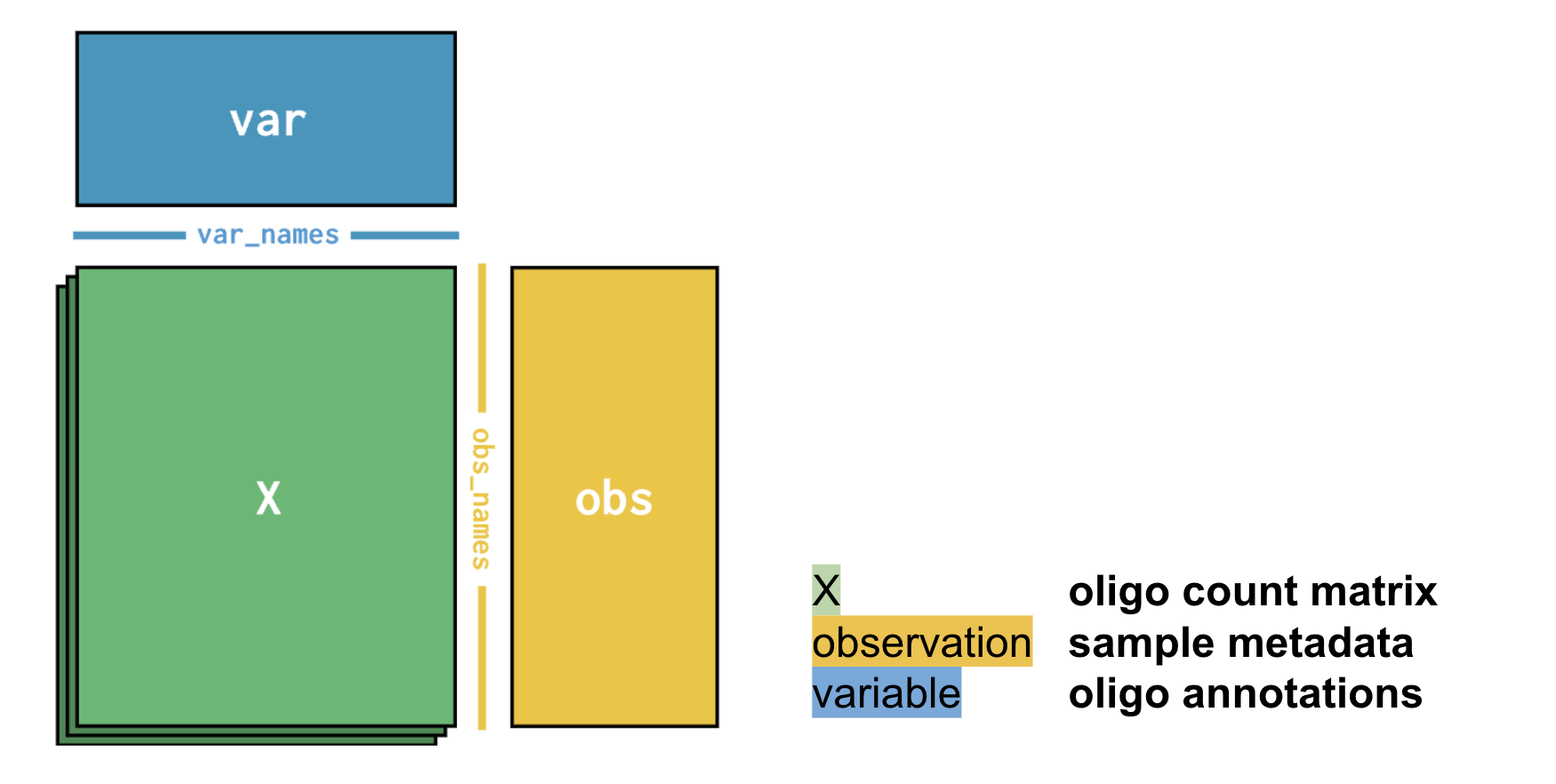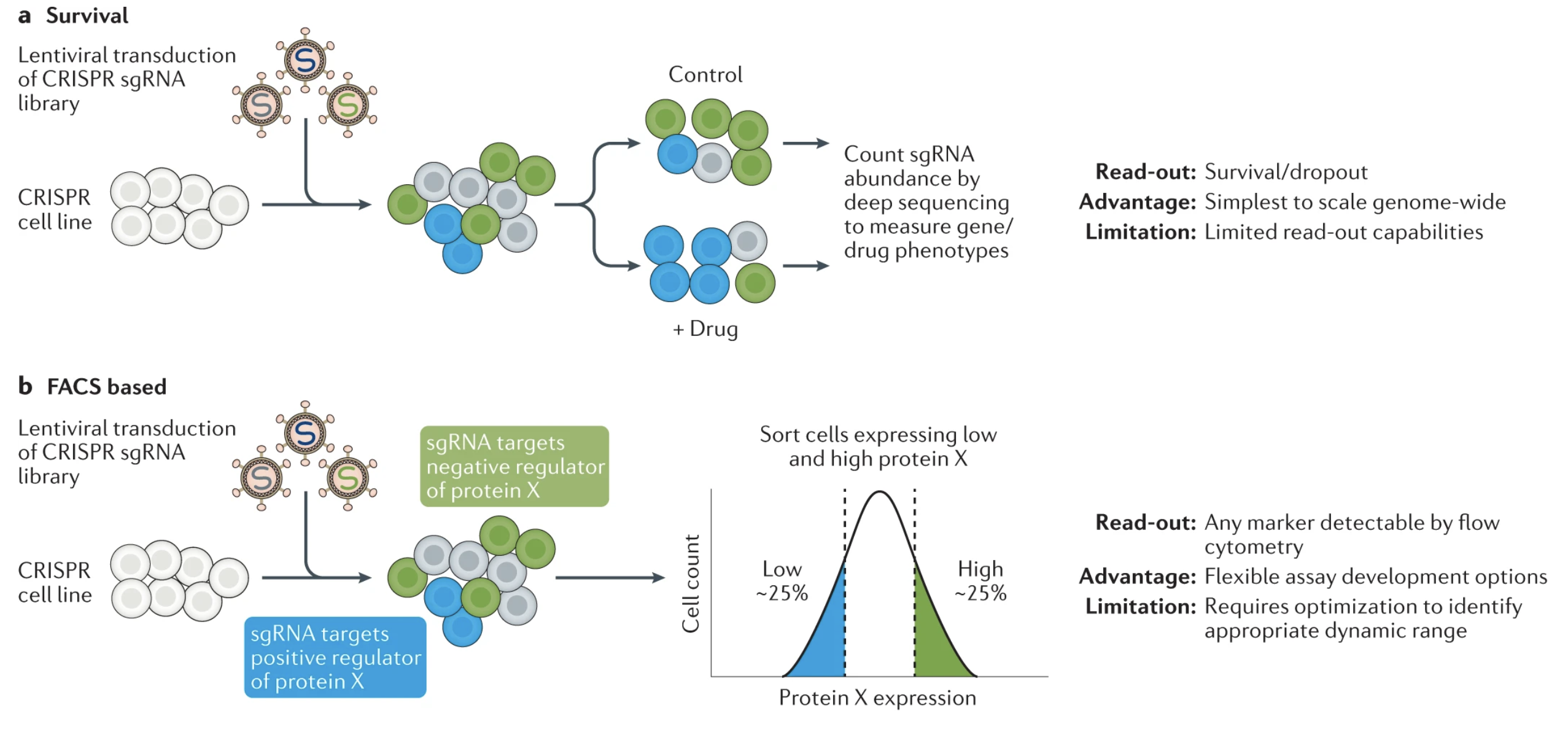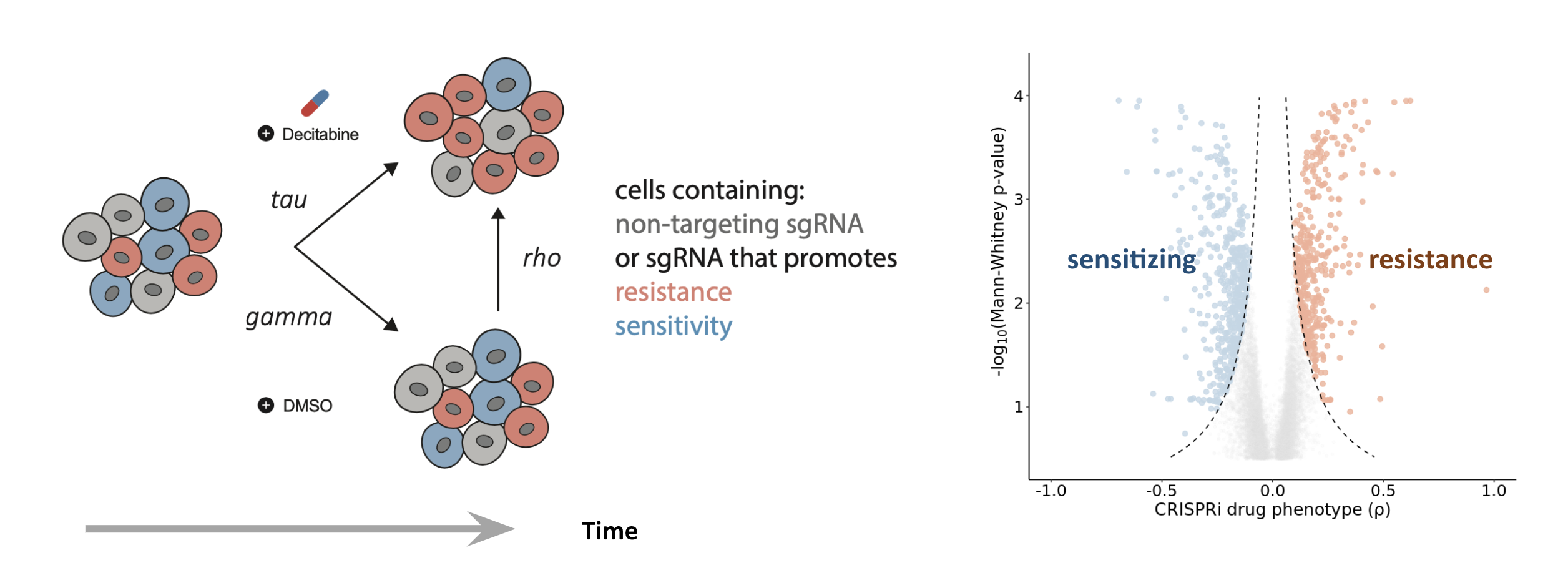Analyze pooled CRISPR screens
Project description
ScreenPro2
The complete docs are available at screenpro2.rtfd.io.
Table of Contents
Introduction
This package is conceptually similar to the ScreenProcessing pipeline but ScreenPro2 is designed to be more modular, flexible, and extensible as the field of Functional Genomics evolves and newer CRISPR screen platforms are developed. Common CRISPR screen methods that we have implemented here are illustrated in a recent review paper:
Fig. 1: Common types of CRISPR screening modalities indicating advances in CRISPR methods.
Installation
ScreenPro2 is available on PyPI and can be installed with pip:
pip install ScreenPro2
For the latest version (development version) install from GitHub:
pip install git+https://github.com/ArcInstitute/ScreenPro2.git
Usage
Note that ScreenPro2 starts with a counts matrix of oligo counts (samples x oligos) so you will need to process your raw sequencing data into a counts matrix before using ScreenPro2.
Load Data
First, load your data into an AnnData object (see anndata for
more information).
The AnnData object should have the following structure:
adata.Xshould be a pandas dataframe of counts (samples x oligos)adata.obsshould be a pandas dataframe of sample metadata including "condition" and "replicate" columnsadata.varshould be a pandas dataframe of oligo metadata including "target" and "targetType" columns- "target" column should be the gene name or other identifier for the reference oligo
- "targetType" column should be the type of reference oligo. Currently, negative control oligos should have
"targetType" == "negCtrl"
Then you need create a ScreenPro object. Here is an example code making a ScreenPro object from an AnnData object:
import pandas as pd
import anndata as ad
import screenpro as scp
adata = ad.AnnData(
X = counts_df, # pandas dataframe of counts (samples x oligos)
obs = meta_df, # pandas dataframe of sample metadata including "condition" and "replicate" columns
var = target_df # pandas dataframe of oligo metadata including "target" and "targetType" columns
)
screen = scp.ScreenPro(adata)

Perform Screen Processing Analysis
Once the ScreenPro object is created, you can use several available workflows to calculate the enrichment of each oligo
between screen arms.
Drug Screen Workflow: calculate gamma, rho, and tau scores
.calculateDrugScreen method can be used to calculate the enrichment of each gene between screen arms for a drug
screen experiment. This method calculates gamma, rho, and tau scores for each gene and adds them to the
.phenotypes attribute of the ScreenPro object.
Here is an example for running the workflow on a CRISPRi-dual-sgRNA-screens dataset:
# Run the ScreenPro2 workflow for CRISPRi-dual-sgRNA-screens
screen.calculateDrugScreen(
t0='T0',
untreated='DMSO', # replace with the label for untreated condition
treated='Drug', # replace with the label for treated condition
db_untreated=1, # replace with doubling rate of untreated condition
db_treated=1, # replace with doubling rate of treated condition
score_level='compare_reps'
)
For example, in a Decitabine CRISPRi drug screen (see Figure 1B-C in this bioRxiv paper), each phenotype score represents a comparison between different arms of the screen and rho scores shows the main drug phenotype as illustrated here:
Flow cytometry based screen workflow: calculate phenotype score to compare high and low bins
.calculateFlowBasedScreen method can be used to calculate the enrichment of each target between high bin vs. low bin
of a flow cytometry-based screen experiment. This method calculates PhenoScore for each target and adds them to the
.phenotypes attribute of the ScreenPro object.
# Run the ScreenPro2 workflow for CRISPRi-dual-sgRNA-screens
screen.calculateFlowBasedScreen(
low_bin='low_bin', high_bin='high_bin',
score_level='compare_reps'
)
Supported CRISPR Screen Platforms
One of the main goals of ScreenPro2 is to make it easy to process data from commonly used CRISPR screen platforms. Also, it is designed to be modular to enable easy extension to custom CRISPR screen platforms or other commonly used platforms in addition to the ones currently implemented.
Currently, ScreenPro2 has easy-to-use workflows for the following CRISPR screen platforms:
CRISPRi-dual-sgRNA-screens
Replogle et al. developed a CRISPRi screening platform that uses two sgRNAs per gene within a single plasmid, and it has
been used to perform genome-scale CRISPRi screens. If you follow the codes in the provided GitHub repository, you
will end up with oligo counts and once you make ScreenPro object, you can use the ScreenPro2 workflow for this
platform to calculate the enrichment of each gene between screen arms.
License
ScreenPro2 is licensed under the terms of the MIT license (see LICENSE for more information) and developed by Abolfazl (Abe) Arab (@abearab), a Research Associate in the Gilbert lab at UCSF and Arc Institute.
Citation
If you use ScreenPro2 in your research, please cite the following paper.
Project details
Release history Release notifications | RSS feed
Download files
Download the file for your platform. If you're not sure which to choose, learn more about installing packages.
Source Distributions
Built Distribution
Hashes for ScreenPro2-0.2.9-py2.py3-none-any.whl
| Algorithm | Hash digest | |
|---|---|---|
| SHA256 | ad94521aa87a396c8fbda7f3320af078ae86c4cc43de9cb4bc996395eb60e903 |
|
| MD5 | 8f8b6e562189181ea44ac7131bf5c21c |
|
| BLAKE2b-256 | 7d8a61bafdb52eb9fcce0d3c7b4deeef65bdf99aee21d23a408eb4bd3d9b2692 |



















